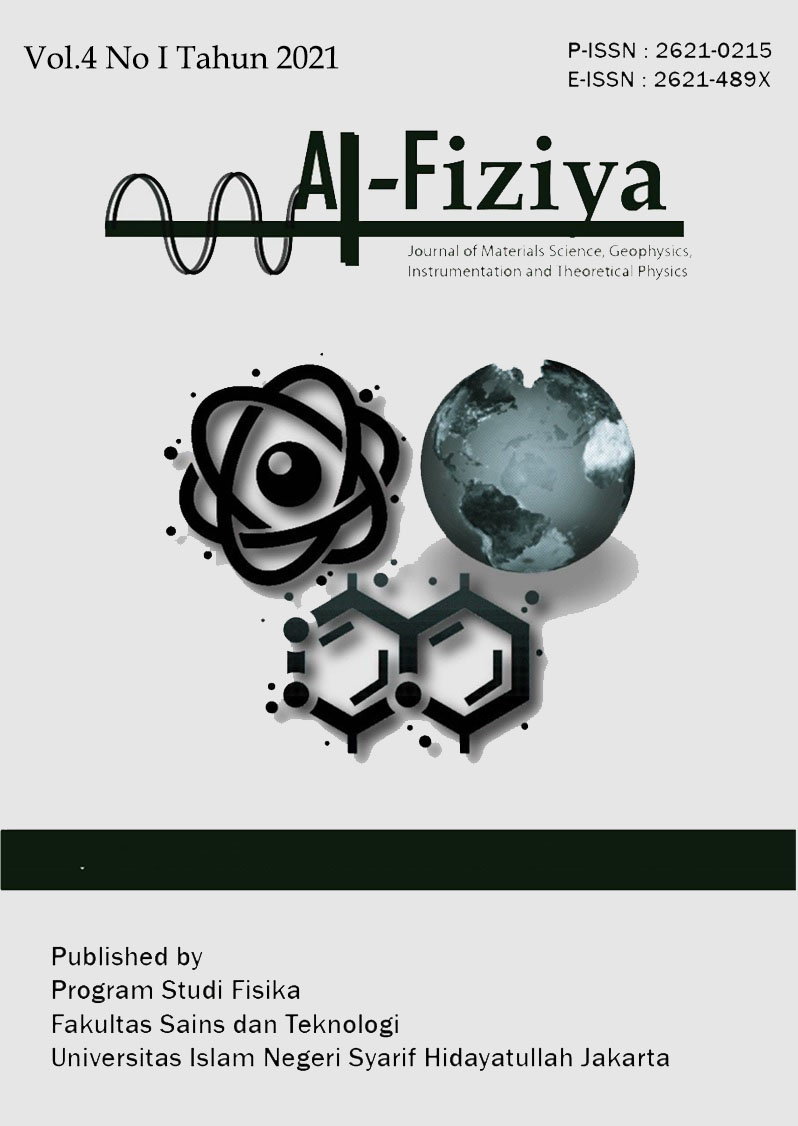2D Forward Modeling Geothermal System Gravity Data in South Solok Region, West Sumatra
DOI:
https://doi.org/10.15408/fiziya.v4i1.20235Keywords:
Forward modeling, geothermal systems, gravity methodsAbstract
Indonesia has the greatest potential for geothermal energy in the world. Geothermal has an important role as an alternative fuel because it is a renewable energy source, but its use has not been maximized. One of the areas that have the greatest potential for geothermal energy in South Solok, West Sumatra. Therefore, this study was conducted to determine the geothermal system in the South Solok area, West Sumatra by using the gravity method. The gravity data processing stage requires some software to get the CBA value(Complete Bouguer Anomaly), map contours of the CBA. Anomaly separation with the butterworth filter method, determination of residual anomaly slice points, and 2D modeling of geothermal systems. Based on modeling, the qualitative interpretation interprets the Complete Bouguer Anomaly map which is suspected as a geothermal prospect area is a low anomaly ranging from 7.9 mgal - 9.4 mgal which is marked in dark blue. Meanwhile, quantitative interpretation produces modeling of the AB and CD slicing with a total of four layers. This layer consists of clay rock as a cap rock, sandstone as a reservoir, granite as a heated rock as a heat source, and the last layer in the form of magma as a heat source. The anomaly modeling of these two sections is dominated by granite rock with a density value of 2500 kg/m3 for the AB section and 2550 kg/m3 for the CD section.References
Ermawati. T, and N. D Siwage. 2014. "Policy Analysis of Geothermal Energy Development in Indonesia". Jakarta: Lipi Press.
Geothermal Directorate. 2018. "Doing Business in Geothermal" Jakarta: Ministry of Energy and Mineral Resources.
Suhud. M, et al. 2015. "Geothermal Training Module for Civil Society Organizations". WWF Indonesia: PT. Maginate Kreasindo.
Permana, N. R. 2020. "Mapping of Basic Rock Structure Using Energy Spectral Analysis Method - Multi Widow Test (Esa - Mwt) Gravity Data in Sakala Sub Basin". Jakarta :UIN Syarif Hidayatullah Jakarta.
Jamaluddin, et al. 2019. "Geological Modeling of Bantar Karet, West Java Using the Method". Geocelebes Journal, Vol. 3, No. 2. Pg. 59 - 65.
G. Hendra. 2009. "Introduction to Geophysical Inversion Modeling". Bandung: CV. Bhumi Printing.
Solok Regency Office. 2018. "Profile of Solok Regency". Jakarta: RPIJM - Integrated Plan and Medium Term Infrastructure Program.
Ilmi, S, et al. 2014. “Subsurface Interpretation of Representative Geothermal Systems and Cranes Based on Gravity Data”. Youngster Physics Journal, Vol. 3, No. 2, pp. 165-170.

